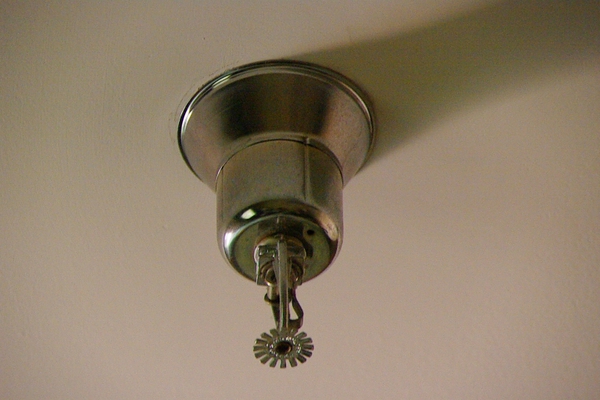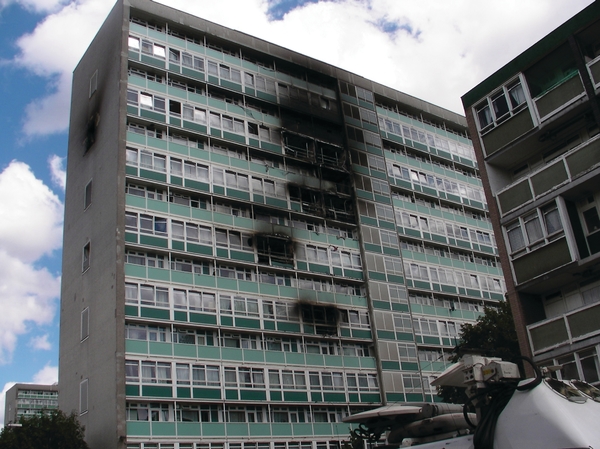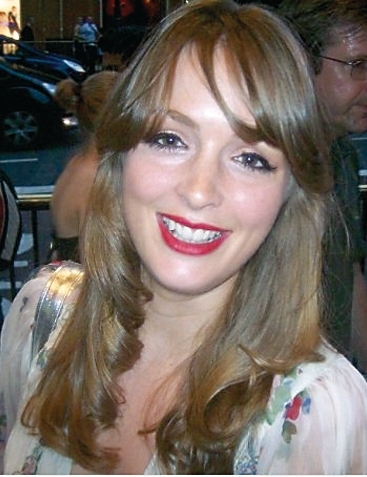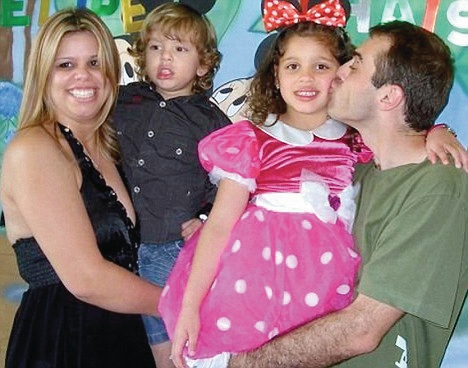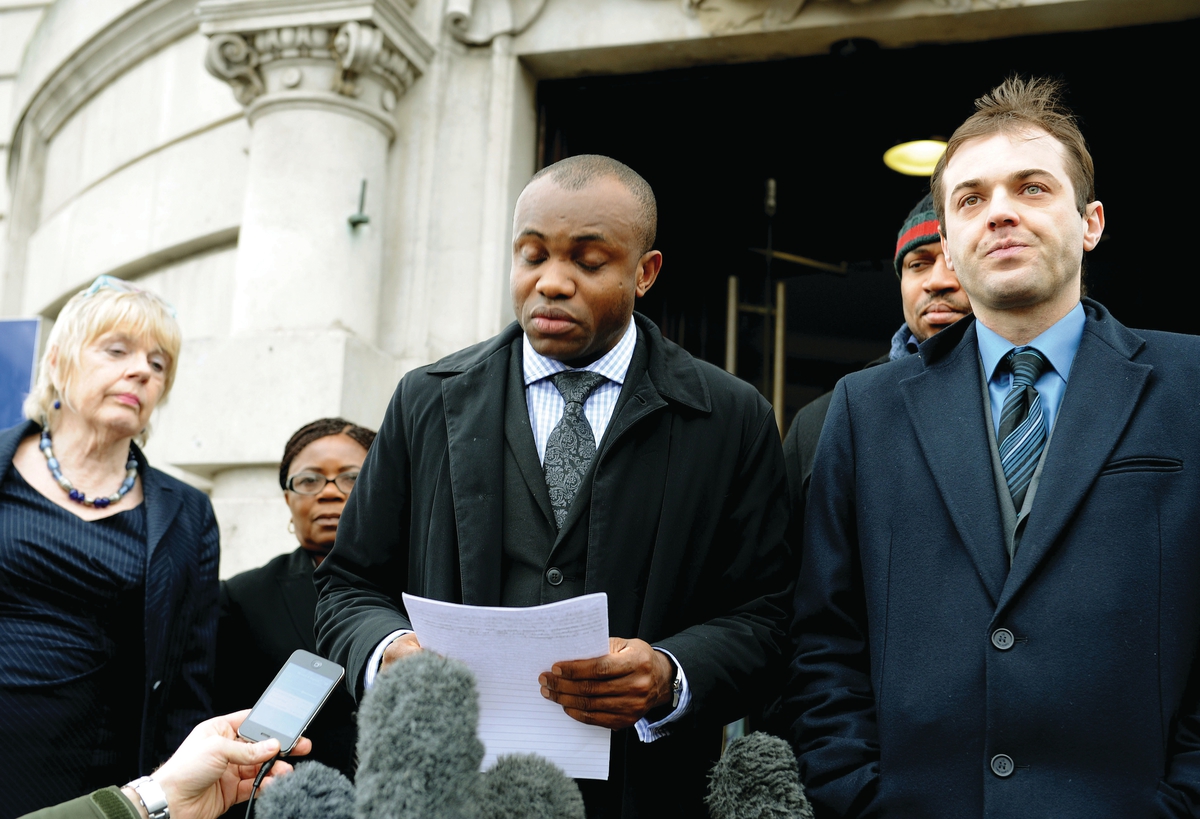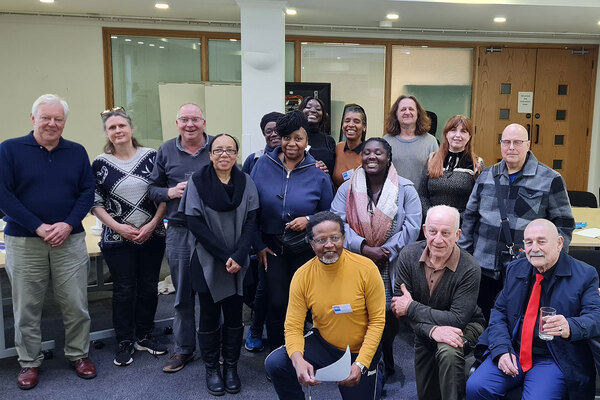Lakanal House: The verdict
On 3 July 2009, six people died in a fire at a council-owned tower block in south London. Last month, the inquest into their deaths found opportunities to prevent the tragedy were missed. Emily Twinch reports on the case that will change social landlords’ approach to fire safety forever
If the Lakanal House inquest had a theme throughout its 11-week running time it was of mistakes and missed opportunities.
In its verdict, published in the 11th week of a gruelling investigation into the deaths of the six people in the blaze on 3 July 2009, the jury clearly pointed to the ‘failures’ of Southwark Council, which owned the 14-storey block. The lessons that emerged are ones that social landlords across the UK can and should learn.
Witnesses for the council, its contractors and London Fire Brigade revealed key decisions taken in the years leading up to the fire now look questionable at best. Certainly steps that could have prevented or slowed the fire’s spread were not taken.
In fact, panels installed as part of decent homes refurbishment under the bedroom windows of flat 79 - the home of victim Catherine Hickman - appear to have helped the fire spread more rapidly than expected after it was started by a faulty television in flat 65, below. ‘This was due to a serious failure on the part of SBDS [Southwark Council’s building design services], its contractors and its sub-contractors,’ the jury said.
The panels were fitted in 2006/07 and neither Annabel Sidney, project manager at Southwark Council, nor James Cousins, senior quantity surveyor at contractor Apollo, thought they were directly responsible for the level of fire resistance they offered. It also emerged during the inquest that they offered less resistance than the panels they replaced.
A spokesperson for Southwark Council says ‘lessons have been learned’. Its refurbishment on Lakanal’s sister block Marie Curie - started last year - has used different panels on the outside of the block, she confirms.
The fire service was also criticised for its lack of consistency in whether to tell residents to ‘stay put’ or ‘get out’ during a tower block fire. Also, no fire risk assessment was carried out at Lakanal House before the blaze, despite being a legal requirement.
As a result, coroner Judge Frances Kirkham made various recommendations to Southwark Council, the Communities and Local Government department and London Fire Brigade at the end of the inquest in a series of letters, known as rule 43 recommendations.
These include ensuring residents know what to do in a fire, and that guidance on both the scope of fire risk assessments and on building regulations related to fire safety is made clearer. Expert witness David Walker, a building surveyor, told the inquest he is still being approached by social landlords to carry out fire risk assessments on residential blocks that don’t have them in place.
Here we give a week-by-week rundown of the inquest, outlining how landlords can ensure a tragedy like Lakanal House never happens again.
Lakanal House: a diary of the inquest
Week 1
Jurors are played the telephone call from 31-year-old Catherine Hickman, who lived in flat 79, Lakanal House, directly above flat 65 where the fire broke out. She was on the phone to fire brigade control for about 40 minutes before she died. At 4.30pm she told the operator: ‘It’s orange, it’s orange everywhere.’ At 4.36pm she said: ‘Oh my god, I can see flames at the door.’ By 4.55pm the operator could no longer hear her breathing.
Rafael Cervi, who lost his wife Dayana Francisquini, 26, son Felipe, three, and six-year-old step-daughter Thais, tells the inquest: ‘That afternoon I saw everything that I built, everything that I dreamed of was over.’
Mbet Udoaka, who lost his wife Helen, 34, and 20-day-old baby Michelle, says: ‘I can never get over these deaths.’ Mr Cervi and Mr Udoaka’s wives and children died together in flat 81 while they were visiting, next to Ms Hickman’s flat.
Crew manager Barry Willett who was the first incident commander on the scene admits he did not know the escape routes out of the 14-storey block of 98 maisonettes or how the complicated flat numbering system worked.
Week 2
The initial firefighting teams on the scene describe the unexpectedly difficult job they faced tackling the blaze at Lakanal House.
Peckham firefighter James Badger, in the first crew to enter the tower block, tells the inquest firefighters did not expect the fire to spread rapidly from flat 65. Jason Moore, another Peckham firefighter, reveals he was one of eight crew members who had visited Lakanal House just two months before the blaze to familiarise themselves with the block. Firefighter John Clarke states he went up to the 10th floor after ensuring people were out of flats on the ninth floor - not realising he was checking the same flats twice as they were maisonettes and therefore spanning two floors with two separate means of entry.
Week 3
Firefighters give a picture of a fire service in disarray as they tried to get on top of a blaze they expected to remain confined to the flat of origin for an hour.
Firefighter Mark Mullins states he noted down several flat numbers on a piece of paper that he was told over the radio from brigade control had ‘people trapped’. The numbers included flats 79 and 81.
Mr Mullins tried to give the list to the second incident commander John Howling. Mr Howling explains he was ‘completely swamped with information’ in an ‘unprecedented incident’ and asked for the list to be given to watch manager Christopher Payton, who was to set up a bridgehead - firefighting base - on the seventh floor.
Week 4
Firefighter Christopher Rose gives a harrowing account of finding the lifeless body of 20-day-old Michelle Udoaka in the bathroom of flat 81. ‘I reached round the door and unfortunately located a very small baby,’ he says.
Rafael Cervi lost his wife Dayana Francisquini, 26, three-year-old son Felipe and six-year-old step-daughter Thais in the blaze.
Mr Rose asks for five minutes to gather himself while giving his evidence and reveals he was diagnosed with post-traumatic stress disorder following the blaze and was off work for seven months.
Martin Freeman, who was the fourth incident commander, says firefighters could not follow the plan normally dictated by operational procedures because ‘this incident was completely alien to that plan’. ‘I had not seen a fire like this before,’ he adds.
Home Office forensic pathologist Dr Olaf Bierdrzycki, who carried out post-mortems on all six victims, explains Ms Hickman died of inhalation of fire fumes and burns. The other five victims died of inhalation of fire fumes.
Week 5
Brigade control operator Harry Simmons describes the blaze as the ‘worst two hours of my career’.
Counsel to the inquest James Maxwell-Scott points out the lack of questions the operator asked Ms Hickman before deciding she should stay in her flat rather than leave the building.
Mr Simmons’ evidence reveals the usual policy was ‘get out and stay out’ and for operators to ask callers about possible escape routes.
A ‘stay-put’ policy for tower blocks came in the 1990s and is advertised in London Fire Brigade leaflets and on its website. But there was no clear guidance to operators on which advice to give.
Further evidence reveals alarming inconsistencies in the advice given to residents. Two other Lakanal House occupants were advised by operators to get out. Mr Simmons says each operator made an individual decision based on their training and experience but agrees there was a ‘strong expectation’ among control room staff that fire crews would successfully rescue people.
Week 6
Fire expert David Crowder talks the inquest through experiments and investigations he did to find out how the fire spread so rapidly.
Jurors are shown video clips of the fire reconstruction on the large screen at the front of the court room. They show how the fire travelled up the outside the building and set fire to the curtains in flat 79 where Ms Hickman died.
Mr Crowder says panels fitted to the outside of the block during a 2006/07 decent homes refurbishment were likely to have burned quicker than the original materials. He tells the jury the ‘boxing in’ under the stairs in the flats - a fire-resistant material pinned to the underside of the staircase - significantly failed within two or three minutes. The suspended ceiling in the corridors, installed in the 1980s, did not have any barriers to fire and smoke spreading along its length.
Week 7
This week sees a clash between the project director for Southwark Council during the 2006/07 decent homes work carried out on the block and contractor Apollo.
James Cousins, Apollo’s senior quantity surveyor, is first up and makes it clear he believes it was Southwark Council’s responsibility to seek approval from Southwark’s building control services that the building complied with building regulations.
Although, contractual documents suggested Apollo should conform with ‘all building regulations and by-laws’ he says Southwark Council usually took on that responsibility.
Annabel Sidney, construction project manager, who worked for Southwark Council’s building design service, breaks down after several hours of tough questioning.
She admits a ‘mistake’ had been made on a document saying building control approval had been obtained during the refurbishment. Building control approval was neither sought nor approved on any element.
Ms Sidney says she is sure it was Apollo’s responsibility to contact the building control department to ensure the project complied with building regulations.
She also states it was Apollo’s responsibility to consider the fire resistance of panels that were to be put on the fire escape balconies and underneath windows. Mr Cousins says he was aware the asbestos panels they were replacing had a ‘fairly good’ fire resistant rate while the panels they were putting in did not. But he did not give it much thought because ‘my company will provide whatever the client asks for’ and he thought it had approved.
Week 8
Sheila Keogh, a health and safety advisor who joined Southwark Council in June 2008, is read a series of emails from November 2006 that preceded her time at the council.
They reveal the council’s senior management were warned numerous times they were breaching the Fire Safety Order 2005 because they had not carried out fire risk assessments on their residential blocks.
One member of staff continually raised the matter, stating plainly: ‘We are in breach of fire safety regulations.’ After another email in October 2008, in which the staff member was calling for urgent action to proceed with fire risk assessments, a senior member of staff forwarded it to another commenting: ‘As usual, a little harsh.’
Ms Keogh did her part organising a one-day fire risk assessment training course for housing officers with the London Fire Brigade, starting in November 2008. She says she was frustrated that the FRA programme did not start until May 2009.
Andy Snazell, the London Fire Brigade’s borough commander for Southwark, reveals housing officers had often shown up late or lacked interest in the training.
Building surveyor David Walker tells the inquest fire risk assessments on complex buildings should be carried out by people with good technical knowledge. Mr Walker says his firm is still getting calls from social housing providers to assess residential blocks that have still not had their first fire risk assessment.
Week 9
Brian Davey, an internationally renowned fire expert, says he considered the ‘stay-put’ policy would have been suitable for most Lakanal House residents but firefighters should have considered evacuating flats ‘directly impacted by the fires’.
Peter Holland, chief fire and rescue advisor for the Communities and Local Government department, suggests the six people who died in the blaze should have been told to get out of the block.
He says fire brigade control should tell people to stay in their flat if they felt safe but ‘if they feel they’re in such jeopardy, they should tell them to get out of the flat involved’. An operator would not know if a block had a ‘stay-put’ policy in place and should explore with the caller whether they were trapped, he states.
He also mentions the importance of ‘compartmentation’ for the stay-put policy - which allows firefighters to expect a fire to be contained in a flat for an hour.
Week 10
The court room is packed to hear coroner Judge Frances Kirkham sum up the extensive evidence.
She highlights the limitations of the fire risk assessments, referring to the evidence of Mr Walker. He had suggested fire risk assessors should see inside at least some of the flats in a block. He suggested a 10 per cent sample and this would involve looking at aspects such as fire escape routes, fire protection and compartmentation.
She also reminds the jury about a letter from London Fire Brigade’s assistant commissioner Steve Turek, sent in March 2009 to the director of housing at Southwark Council, which said firefighters had noted several fire safety hazards in London social housing.
He suggested: ‘We consider that the structure of the building and changes that have been made to it and the levels of fire resistance are matters that should be considered as part of a suitable and sufficient fire risk assessment.’
Ms Kirkham also states evidence from the Lakanal House residents demonstrated they knew little about fire safety in the block before the fire.
She finishes by saying: ‘By 3 July 2009, no fire risk assessment had been carried out on Lakanal House.’
Week 11
The jury reads out its narrative verdict. Judge Frances Kirkham sends rule 43 letters to communities secretary Eric Pickles, Southwark Council and London Fire Brigade.
The inquest: what landlords need to know
- The inquest revealed tenants lacked knowledge about what to do in the event of a fire in a high-rise building. Judge Frances Kirkham (pictured) recommends landlords improve their tenants’ fire safety awareness and are encouraged to retrofit sprinklers. She also recommends the government publishes guidance clarifying when tenants should be told to ‘get out’ of blocks and when they should be told to ‘stay put’.
- Part of the reason the fire in Lakanal House spread quickly was because of failures of fire safety measures inside the flats. Expert David Walker suggested landlords view a 10 per cent sample of flats inside a block when doing fire risk assessments.
- The panels on the outside of Lakanal House, fitted in a 2006/07 decent homes refurbishment, were not fire resistant and allowed the fire to spread in under five minutes from the flat where the blaze started to the flat above, where Catherine Hickman died.
The jury concluded Southwark Council, its contractors and sub-contractors were guilty of ‘serious failings’ in relation to these panels because if they had been fire resistant they would have prevented the fire spreading so rapidly.

